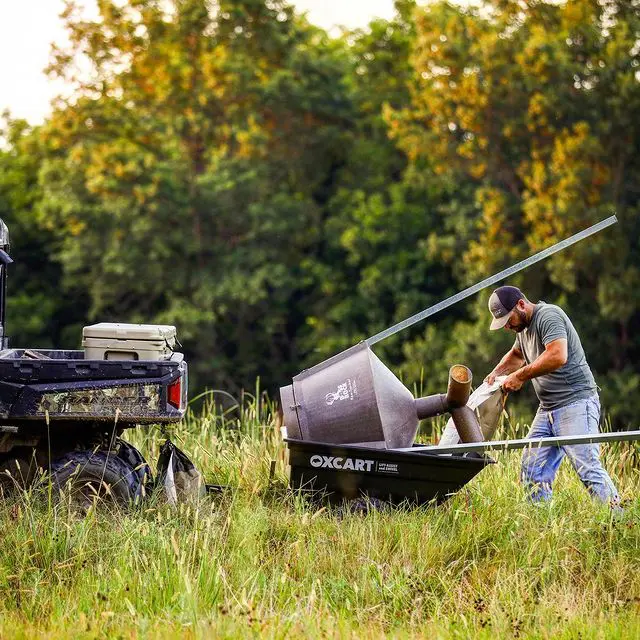
The Innovations and Functions of OxCart
After trying available tow-behind carts on the market for his various chores, Todd Dechant, OxCart inventor, was left with a barn and several storage units full of:
- Cracked or bent tubs
- Broken frames
- Flattened tires
- Busted bearings
- Poor dump angle
- Low ground clearance
Reading the online reviews for existing pull-behind carts confirmed that he was not alone in his disappointment. As an inventor whose products can be found across the farm and ranch and home improvement categories, he had discovered his next challenge.
Durable Construction
Todd found that most pull-behind lawn cart, yard cart, and utility dump trailer durability and designs limited people to filling the beds only half full and hauling only what they could lift themselves. Most trailers are made up of formed metal frames, less poly tub resin, thinner tire rubber, and bearing strength, which reduced them to handle only light or medium-duty projects. Some manufacturers use the same frame but would add larger tubs for each cart to increase the price. Frames are designed where people can haul only what they can lift. If they filled it too much, they would strain to lift a tub and then quickly lose control, stepping away as the heavy stuff shifts and slams the tub to the ground. So, durability and design on most dump carts leave people buying smaller carts they can handle and taking more trips to finish jobs.

Solutions
Why waste money buying a bigger utility cart if you can’t fill it up, save time, take fewer trips, and get more done?
Todd wanted to provide the solution that would allow people to take fewer trips and fill whatever cart they bought with anything without the tires or bed failing or frame buckling. He realized a tow-behind dump cart would need to offer both durability to hold and haul heavy loads and innovations to make it easy to lift, control, position, and unload safely.
OxCart – Tackles Hard Chores with Ease
OxCart was born from the desire to get more out of your ATV or mower, suffer fewer frustrations with the durability of existing pull-behind carts, and allow users to handle and control heavier loads easier and safer. Wasting time and taking more trips by only being able to fill beds half-full because the material was too heavy for the cart to handle makes no sense.





